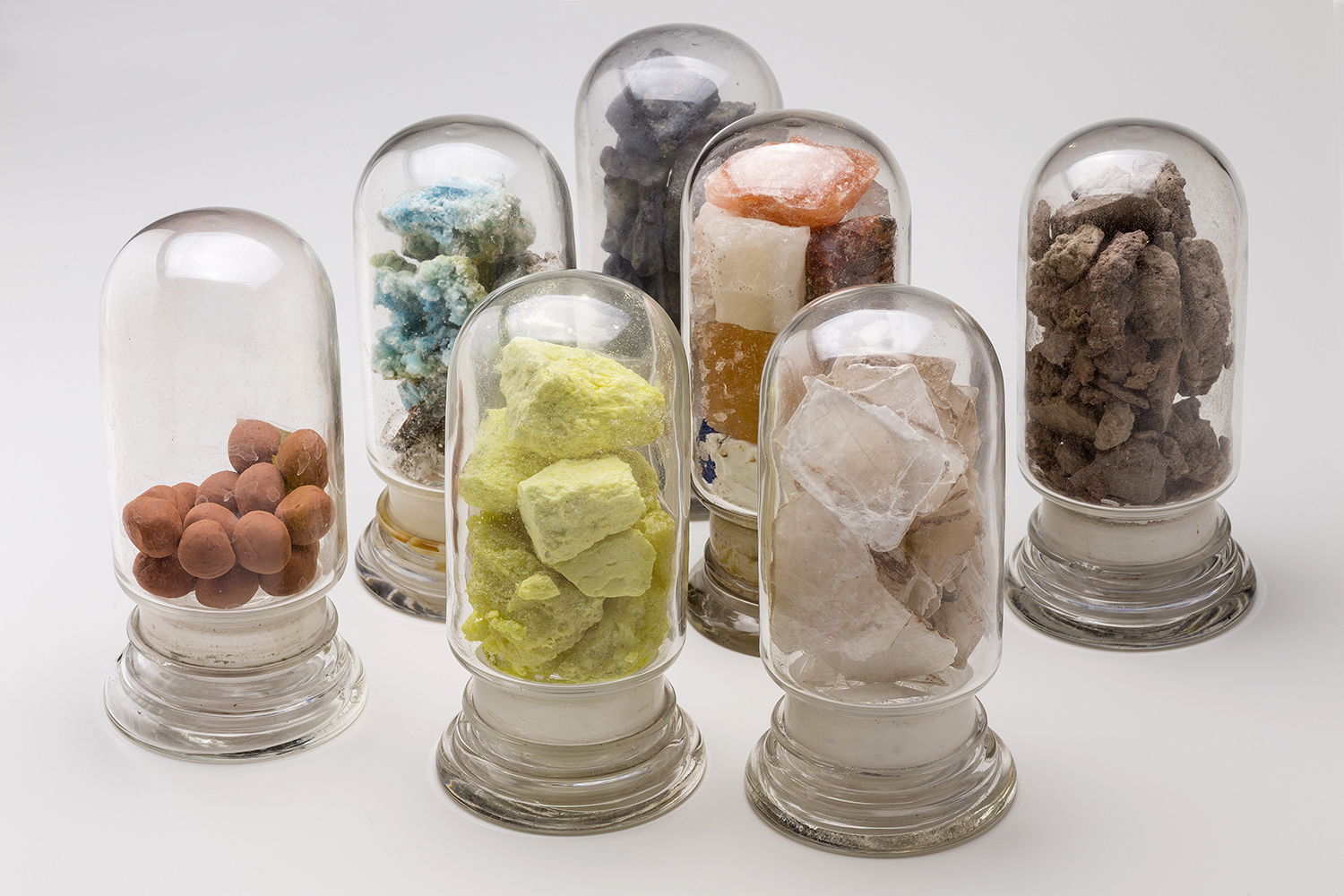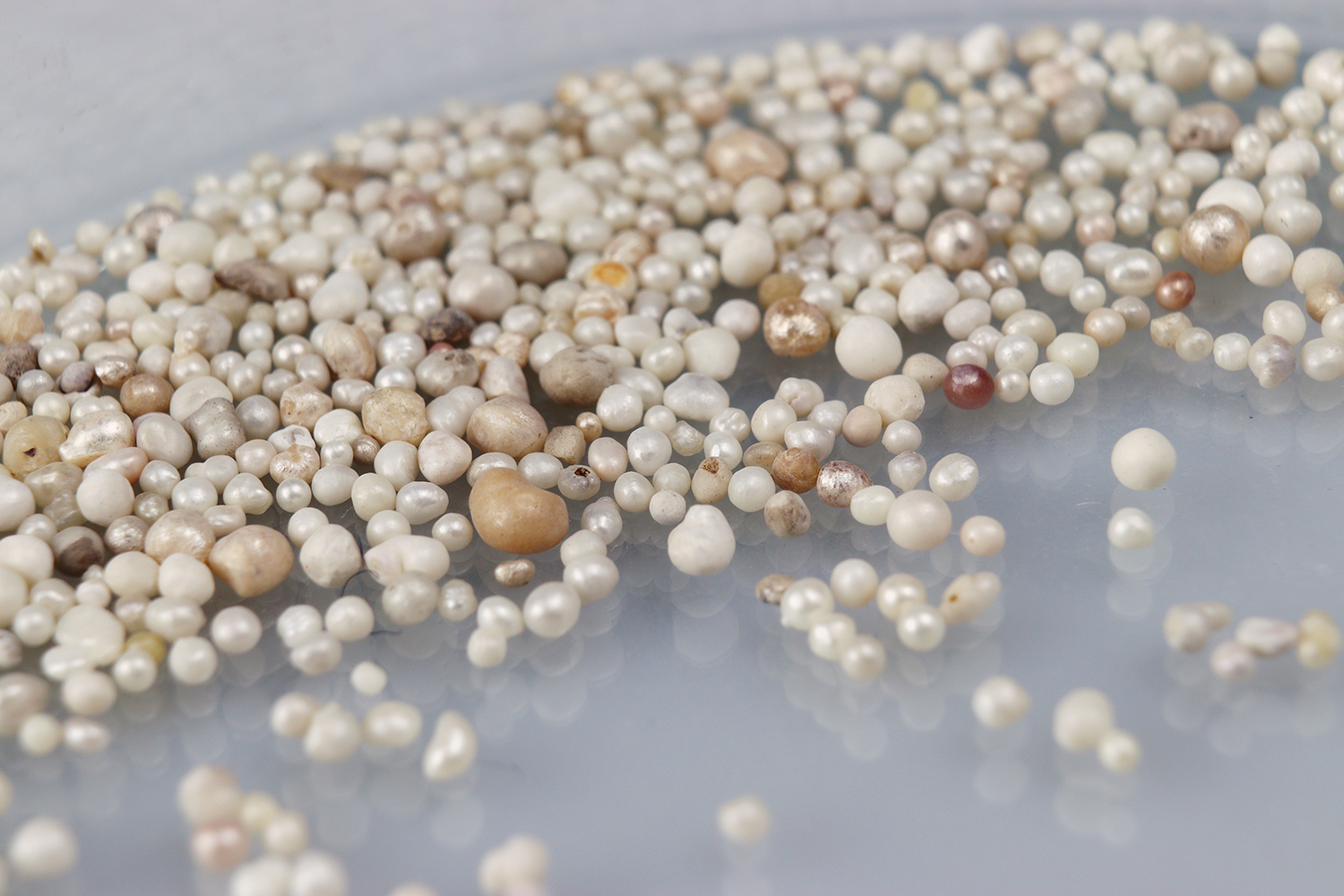On the trail of pharmaceutical development From the Pharmaceutical Collection of TU Braunschweig
It is no coincidence that the glasses in our picture of the month are very colourful. They contain pharmaceutical-chemical and mineral substances that were used as pharmaceuticals. The Greek word for “pharmaceutical” (pharmakon) contains not only “poison” but also “colour” as a secondary meaning. The sight glasses come from the Pharmaceutical History Collection (Schneider Collection) of TU Braunschweig, which is looked after by the Department of the History of Science and Pharmacy.
These sight glasses in our picture of the month for November document a double wealth – substances extracted from the soil and water that continue to change or have already changed under the influence of light and air. Some of the substances come from mines, such as the nearby Rammelsberg.

The display glasses from the Collection on the History of Pharmaceuticals of the Department of the History of Science and Pharmacy contain pharmaceutical-chemical and mineral substances that were used as medicines. Picture credits: Anette Marquardt/TU Braunschweig
In the understanding of nature, minerals formed one of the three kingdoms of nature alongside plants and animals until the middle of the 19th century. In view of the dynamic development in research of the active ingredients of animal and plant organisms from this time onwards, it is often forgotten that the growing understanding of inorganic chemical processes was also central to pharmaceutical development – and this applies just as much to the development of industrial chemistry.
The traces of this development, as documented by Schneider’s unique collection of substances, were traced by Dr Anette Marquardt in her doctoral thesis.
Exploring the entanglements of industrial chemistry, pharmacy, natural history and art
Based on the multiple meanings of the word “pharmacon”, the Department of the History of Pharmacy, together with students of pharmacy, created an exhibition on the history of the collection over several semesters on the occasion of the 60th anniversary of the collection. Under the title “Pharmakon – Farbe – Zauber – Gift – Arznei” (Pharmakon – Colour – Magic – Poison – Medicine), they traced the entanglements of commercial chemistry, pharmacy, natural history and art.
Thus, the intense yellow sulphur shown in our picture of the month not only has an antimicrobial effect, was not only traditionally used for various skin diseases as well as for coughs, it is one of the most important reactants for chemical processes. Without sulphuric acid, there would be no chemical industry.
The bluish crystals are vitriol (here the sulphate of copper containing water of crystallisation) from the Rammelsberg. The formation of mineral colours such as the toxic copper acetate arsenite (Schweinfurt green), a popular colour for walls, papers and textiles, which Vincent van Gogh also used in a self-portrait, is closely connected to vitriol. Other coloured compounds, such as Berlin blue, are considered essential medicines today as antidotes against certain poisons.
Even after the exhibition closed, the collection continued to be researched and, in particular, included in student projects. New themes can be unearthed. For example, with the topic “Medicine from the Mine”, which drew us deeper into the world of interaction between the natural environment and human trades. With the “Object of the Month” format, the collection regularly publicises new own and student research projects that shed light on special features of object and pharmaceutical history.
Pharmaceutical compositions from pearls
Pearls are presented as the object of the month for November in the Department of the History of Pharmacy. Concretions made of shells were a component of many medicinal compositions in the 16th to 18th centuries. Prepared into fine powders or small cones or as magisterium, they were usually used in combination with other substances.

From the 16th to the 18th century, pearls from shells were a component of many medicinal preparations. Prepared into fine powders or small cones or as magisterium, they were usually used in combination with other substances. Picture credits: Anette Marquardt/TU Braunschweig
They were introduced into medicinal therapy by Arab physicians. Margaritae orientales, East Indian pearls, or Margaritae occidentales, West Indian pearls, were used.
Cakes with pearls, pearl milk, master powder made of pearls, power potion with bezoar, dissolved pearls and coral are just some of the preparations that went from the court pharmacy to the Wolfenbüttel court in the 17th century, as the database “Arznei und Confect. Medicinal Culture at the Wolfenbüttel Court” reveals.
From the variety of usage of pearls until the end of the 18th century, only a few examples. Adam Lonitzer (1528 -1586) described the use of pearls to strengthen the heart, against heart tremors and dizziness. He propagated Manus Christi cum perlis (pearl sugar) for fainting. Pearls “are also good against bloody flux and dysentery.
They restrain the women’s time and make beautiful teeth.” More examples can be found on the History of Pharmacy pages in the “Object of the Month” format from the beginning of November.
Further Information
The catalogue of the exhibition “Pharmakon – Farbe – Zauber – Gift – Arznei” (Pharmakon – Colour – Magic – Poison – Medicine) is currently being published and can be ordered from bookshops or requested from the authors.
Text: Prof. Bettina Wahrig und Dr. Anette Marquardt
